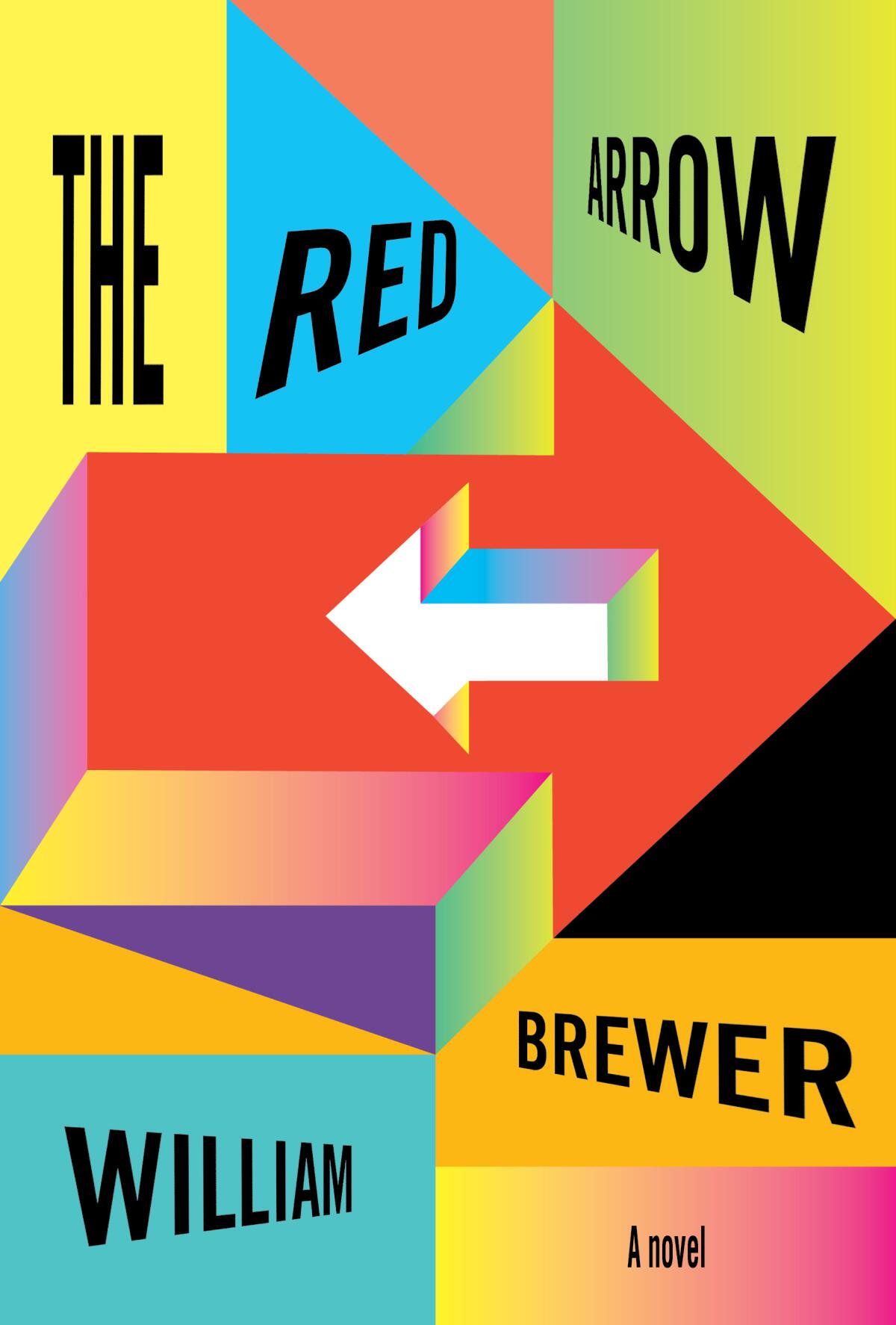Review: A suicidal writer take the psychedelic cure in a time-bending debut novel

On the Shelf
Red Arrow
By William Brewer
Knopf: 272 pages, $27
If you buy books linked on our site, The Times may earn a commission from Bookshop.org, whose fees support independent bookstores.
In his provocative 1991 book “Art & Physics: Parallel Visions in Space, Time, and Light,” Leonard Shlain notes that although his subjects make for “a strange coupling,” fundamentally they “are both investigations into the nature of reality.” William Brewer’s debut novel, “The Red Arrow,” adds another pairing to his matrix: depression and psychedelics.
The premise of the “The Red Arrow” sounds like the high-concept picaresque narratives of Thomas Pynchon or Neal Stephenson: A debt-ridden painter-turned-writer accepts a job as a ghostwriter for a world-renowned physicist who vanishes before the writer can finish the book. Desperate to escape his debts and plagued by a suicidal depression he refers to as “the Mist,” the unnamed writer undergoes a treatment of psilocybin, the active ingredient in magic mushrooms. Most of this information is provided to the reader in the first few pages. We meet the narrator as he’s on his way to find the Physicist (name redacted per their contract) aboard Italy’s Frecciarossa (“Red Arrow”) train. Along the way, the writer describes his financial failures, his strained relationship with his wife, Annie, and his life-changing new treatment.
What follows is much more grounded and character-based than the Pynchonian setup might suggest. Although there are still some imaginative conceits (the narrator’s father constructs a replica Blockbuster video store in his basement), many of the plot points are more pedestrian. His relationship with Annie is presented in realistic terms; much of his narration focuses on his battles with self-loathing and suicidal ideation.
Dyer’s gloriously shape-shifting literary project — intensely perceptive, essayistic memoir — continues with “The Last Days of Roger Federer.”
The narrator’s influences are also real — and explicitly stated. He decides to venture into psychedelic therapy after reading Michael Pollan’s 2018 book, “How to Change Your Mind.” He even quotes from Pollan’s enthusiastic endorsement of “the new science of psychedelics” at length. He also reads and discusses other works, from Michael Herr’s New Journalism classic “Dispatches” to Geoff Dyer’s D.H. Lawrence non-biography “Out of Sheer Rage.” Like the latter, “The Red Arrow” turns on its narrator failing to produce a book he agreed to write.

Brewer’s evocation of the Mist is among the most accurate and insightful depictions of depression I’ve ever read. The metaphor of the fog is serviceable, though not particularly original, and the way the narrator characterizes his mental struggles is illuminating:
“[I]t was like a tremor from within, or not a tremor but a whole chord thrumming deep down in my nuclei in a way that seemed so foundational it was as if gloom was the original force that made up whoever I was, meaning that everything else, from joy to hunger to boredom, was nothing but static, useless signals that had gathered and distracted me from the truth.”
People who have lifelong depression can relate to the notion of it seeming “foundational” to one’s identity. Moreover, the narrator’s relationship with his depression (make no mistake: it is a relationship) is also convincingly rendered. For much of his history with Annie he has hidden the severity of his illness, worried the truth would drive her away, but this act of “protecting” a loved one only works to isolate him more, sending him deeper into the Mist.
In “The Last Man Takes LSD,” two authors track Foucault’s late-in-life rightward turn, beginning with a hallucinogenic 1975 visit to Death Valley.
Brewer is also a poet, a fact reflected in some of the novel’s exquisite language, but he is often at his best when he is most novelistic, as in his sneakily long sentences, some of which stretch on for more than a page. It’s a testament to his skill, and his transfixing language, that readers may not even register their length.
In a note at the end of the book, Brewer acknowledges that the Physicist is based on Carlo Rovelli, the Italian theoretical physicist and author of “Seven Brief Lessons on Physics” and “The Order of Time.” (Quotes from the latter are attributed to the Physicist in the novel.) Rovelli made a name for himself as a founder of loop quantum gravity theory, but it’s his ideas about time that are relevant to “The Red Arrow,” where they interact with theories on psychedelics.
Time, Rovelli argues, doesn’t exist externally but internally: “It is entirely in the present, in our minds, as memory and anticipation.” Pollan, in “How to Change Your Mind,” also invokes time when discussing how people know themselves: “Without the ability to remember our past and imagine our future,” Pollan writes, “the notion of a coherent self could hardly be said to exist.” Depression and other disorders, he suggests, “are not the result of a lack of order in the brain but rather stem from an excess of order.” When someone is mentally stuck in their habitual perceptions and those perceptions cause suffering, it informs what they see as “the nature of reality.” Psychedelics help us view things from outside these constructs, thus freeing us from their grip on our lives.
This is, at least, how the novel presents the experimental psilocybin treatment — as a one-stop fix. In Pollan’s book, however, this idea is discredited, as “more than half” of the subjects in a study “saw the clouds of their depression eventually return.” The narrator’s depression runs deep and nearly leads him to suicide numerous times. His transformation into a fully cured and functioning adult stretches credulity. But as an examination of mental health, of how physics and art and consciousness all have their role to play in it — are indeed intertwined with it — and as a novel of ideas that also creates a fully fleshed narrator with a convincing inner life, “The Red Arrow” succeeds. It is a beguiling and ruminative synthesis of strange couplings: art and physics, psychology and psychedelics, characters and ideas.
Drugs like psilocybin, MDMA and LSD are proving effective for mental health. Healthcare providers need more and better information to share with patients.
Clark is the author of “An Oasis of Horror in a Desert of Boredom” and the forthcoming “Skateboard.”
More to Read
Sign up for our Book Club newsletter
Get the latest news, events and more from the Los Angeles Times Book Club, and help us get L.A. reading and talking.
You may occasionally receive promotional content from the Los Angeles Times.









